Pricing Guides & Dictionary of Makers Marks for Antiques & Collectibles

Appraise and find values for
17th century Greek icon, the head...
From
marks4antiques.com
- The most updated price guide and makers' marks research online
As a member, you have access to a team of experts
and assistance is always available to you for free
An example from the millions of items in our Price Guide:
17th century Greek icon, the head of Christ flanked by two angels over panels depicting St. Stephanos, St. George, oil on tooled gold ground on canvas laid...
This is an example from our
values4antiques price guide
We do not buy or sell any items
See more price guides
Check our other research services:
IDENTIFY WORLDWIDE MAKERS' MARKS & HALLMARKS
marks4ceramics:
Porcelain, Pottery, Chinaware, Figurines, Dolls, Vases...
marks4silver
:
Silver, Jewelry, Pewter, Silverplate, Copper & Bronze...
Explore other items from our
Antiques & Collectibles Price Guide
-
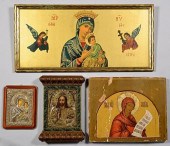 GROUPING OF 4 RUSSIAN AND GREEK ICONSGro
[more like this]
GROUPING OF 4 RUSSIAN AND GREEK ICONSGro
[more like this]
-
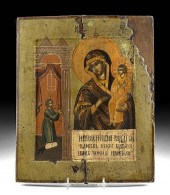 19TH C. GILT RUSSIAN ICON - OUR LADY OF
[more like this]
19TH C. GILT RUSSIAN ICON - OUR LADY OF
[more like this]
-
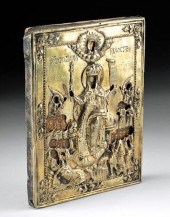 18TH C. RUSSIAN ICON SILVER OKLAD JOY OF
[more like this]
18TH C. RUSSIAN ICON SILVER OKLAD JOY OF
[more like this]
-
 2 HOLYLAND POTTERY VESSELS + 2 GREEK & R
[more like this]
2 HOLYLAND POTTERY VESSELS + 2 GREEK & R
[more like this]
-
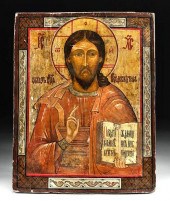 FINE 19TH C. RUSSIAN ICON CHRIST PANTOCR
[more like this]
FINE 19TH C. RUSSIAN ICON CHRIST PANTOCR
[more like this]
-
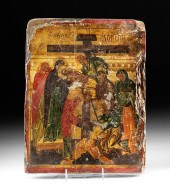 19TH C. RUSSIAN WOODEN ICON - THE DEPOSI
[more like this]
19TH C. RUSSIAN WOODEN ICON - THE DEPOSI
[more like this]
-
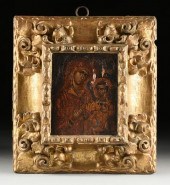 A GREEK ICON, "THEOTOKOS HODEGETRIA (MOT
[more like this]
A GREEK ICON, "THEOTOKOS HODEGETRIA (MOT
[more like this]
-
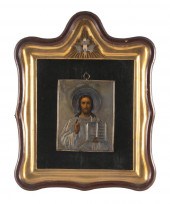 RUSSIAN ICON OF CHRIST PANTOCRATOR 19TH
[more like this]
RUSSIAN ICON OF CHRIST PANTOCRATOR 19TH
[more like this]
-
 20TH C. RUSSIAN ICON OF SAINT GEORGE W/
[more like this]
20TH C. RUSSIAN ICON OF SAINT GEORGE W/
[more like this]
-
 20TH C. RUSSIAN ICON - LIFE OF PROPHET E
[more like this]
20TH C. RUSSIAN ICON - LIFE OF PROPHET E
[more like this]
-
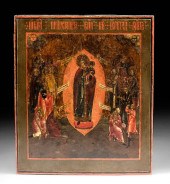 19TH C. RUSSIAN WOODEN ICON - JOY OF ALL
[more like this]
19TH C. RUSSIAN WOODEN ICON - JOY OF ALL
[more like this]
-
 GREEK ICON OF FATHER PEKI AND DOUBLE SID
[more like this]
GREEK ICON OF FATHER PEKI AND DOUBLE SID
[more like this]
-
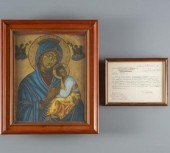 GREEK ICON & CHURCH LETTERA framed late
[more like this]
GREEK ICON & CHURCH LETTERA framed late
[more like this]
-
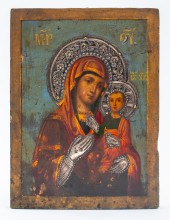 GREEK ICON OF THE THEOTOKOS HODEGITRIA,
[more like this]
GREEK ICON OF THE THEOTOKOS HODEGITRIA,
[more like this]
-
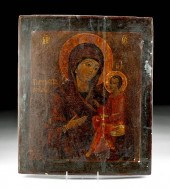 RUSSIAN ICON - MOTHER OF GOD (THEOTOKOS)
[more like this]
RUSSIAN ICON - MOTHER OF GOD (THEOTOKOS)
[more like this]
-
 18TH CENTURY RUSSIAN ICON IN DISPLAY CAB
[more like this]
18TH CENTURY RUSSIAN ICON IN DISPLAY CAB
[more like this]
-
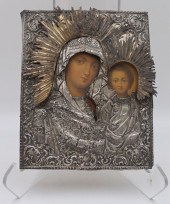 SILVER. 19TH C RUSSIAN SILVER ICON OF TH
[more like this]
SILVER. 19TH C RUSSIAN SILVER ICON OF TH
[more like this]
-
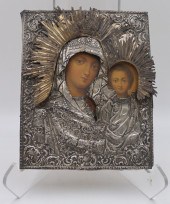 SILVER. 19TH C RUSSIAN SILVER ICON OF TH
[more like this]
SILVER. 19TH C RUSSIAN SILVER ICON OF TH
[more like this]
-
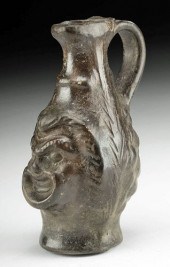 CAMPANIAN BLACKWARE ARYBALLOS - GREEK CO
[more like this]
CAMPANIAN BLACKWARE ARYBALLOS - GREEK CO
[more like this]
-
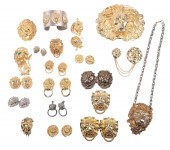 Costume Lion jewelry grouping to include
[more like this]
Costume Lion jewelry grouping to include
[more like this]
-
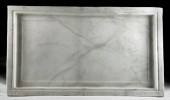 AN IMPORTANT TRANSLATED BYZANTINE MARBLE
[more like this]
AN IMPORTANT TRANSLATED BYZANTINE MARBLE
[more like this]
-
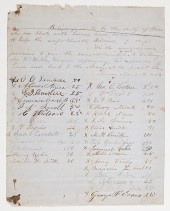 Civil War Archive of Letters & Documents
[more like this]
Civil War Archive of Letters & Documents
[more like this]
-
 GRP: 26 ANCIENT GREEK BOOKSGroup of 26 b
[more like this]
GRP: 26 ANCIENT GREEK BOOKSGroup of 26 b
[more like this]
-
 GROUPING OF GREEK AND GREEK STYLE TERRAC
[more like this]
GROUPING OF GREEK AND GREEK STYLE TERRAC
[more like this]
-
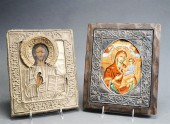 RUSSIAN ICON AND GREEK ICONRussian Icon
[more like this]
RUSSIAN ICON AND GREEK ICONRussian Icon
[more like this]
-
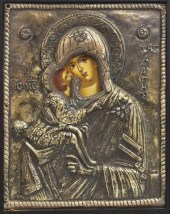 FRAMED GREEK RELIGIOUS ICON, .950 SILVER
[more like this]
FRAMED GREEK RELIGIOUS ICON, .950 SILVER
[more like this]
-
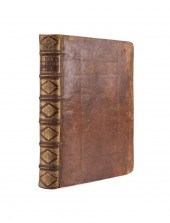 LUCIAN, DIALOGI ET ALIA MULTA, 1522 ALDI
[more like this]
LUCIAN, DIALOGI ET ALIA MULTA, 1522 ALDI
[more like this]
-
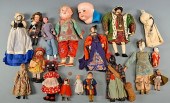 ASSORTED DOLLS, 18 ITEMS INC QING CHINES
[more like this]
ASSORTED DOLLS, 18 ITEMS INC QING CHINES
[more like this]
-
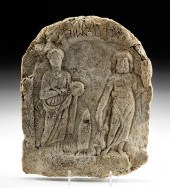 ROMAN LIMESTONE CIPPUS W/ MEDICAL GODS &
[more like this]
ROMAN LIMESTONE CIPPUS W/ MEDICAL GODS &
[more like this]
-
 19TH C. RUSSIAN ICON OF SAINT GEORGE W/
[more like this]
19TH C. RUSSIAN ICON OF SAINT GEORGE W/
[more like this]
-
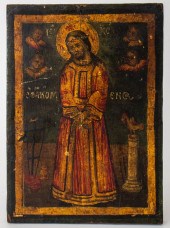 PROVINCIAL GREEK ICON OF THE SUFFERING O
[more like this]
PROVINCIAL GREEK ICON OF THE SUFFERING O
[more like this]
-
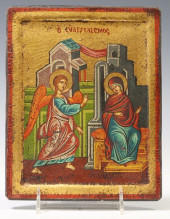 GREEK ORTHODOX PARCEL GILT & PAINTED
[more like this]
GREEK ORTHODOX PARCEL GILT & PAINTED
[more like this]
-
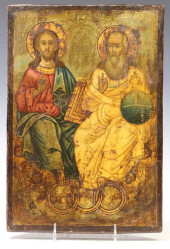 GREEK ORTHODOX RELIGIOUS ICON ON PANEL,
[more like this]
GREEK ORTHODOX RELIGIOUS ICON ON PANEL,
[more like this]
-
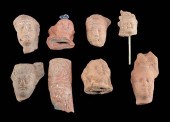 8 EGYPTIAN PTOLEMAIC & ROMANO POTTERY HE
[more like this]
8 EGYPTIAN PTOLEMAIC & ROMANO POTTERY HE
[more like this]
-
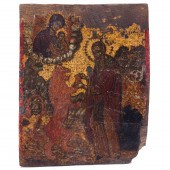 GREEK ICON OF ST MARK THE EVANGELIST WIT
[more like this]
GREEK ICON OF ST MARK THE EVANGELIST WIT
[more like this]
-
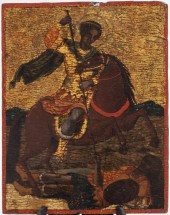 ANTIQUE GREEK ICON "SAINT DEMETRIUS" 18T
[more like this]
ANTIQUE GREEK ICON "SAINT DEMETRIUS" 18T
[more like this]
This list is limited to only a few results.
Many more items are available to our members in our
Price Guide!




